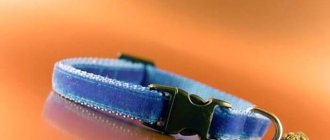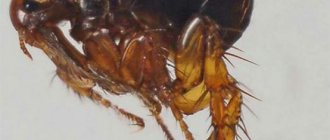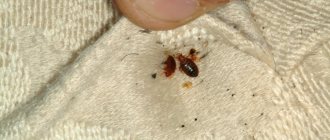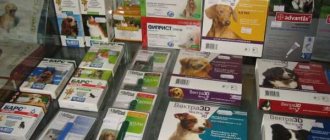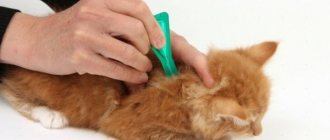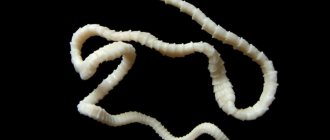At what age can drops be used?
Fleas are external parasites of pets. Flea bites are very itchy and can cause allergies and dermatitis in the animal. If your pet is left untreated, its fur may fall out. The body becomes vulnerable to worms and various infections. Flea infestation leads to the development of anemia, which often ends in death.
The cat is itching
A kitten can become infected immediately after birth. This occurs if the mother was not treated before pregnancy. Babies can be treated from the age of 3 months.
Before reaching this age, fleas are removed by hand, the kittens are bathed with a mild shampoo, making sure that it does not get into the baby’s eyes, mouth and nose. After bathing, you need to dry the coat with a hairdryer. Do not allow the kitten into a cold, drafty room for 8–10 hours. By licking newborns, the cat removes some of the fleas. It is advisable to wash the bed on which the cat family sleeps every day. You can comb babies with a small soft comb.
The drops are intended for kittens at least six months old. In pet stores and veterinary pharmacies you can find special gentle drops for babies, but they also should not be used before babies are 12 weeks old.
Important! Products such as spray, special collar, powder, and aerosol are not suitable for children. Moreover, if you put a collar on a kitten too early, this can lead to stunted growth and development of the pet.
Kitten after bathing
How to use drops for dogs
Where to put flea drops on a dog?
Usually flea drops are placed on the dog's withers. Whether you need to rub in the drops or not depends on the drug chosen. The hair on the dog's withers will need to be parted so that the drops also get on the skin. If the drops you use need to be rubbed in, then this should be done carefully and smoothly. And better use gloves. And try to apply the drops in the area of the withers where the pet cannot lick the drug.
How many drops do you need to apply?
Usually the required number of drops is indicated by the manufacturer in the instructions for use. Also, the dose of drops depends on the weight and age of the dog. Flea drops have yellow or brown tints and are in small pipettes and ampoules, and most often one pipette is designed for one-time use.
Next, the dosages will be analyzed, following the example of the drug Advantix. If your dog weighs less than 4 kilograms, then 0.4 ml of the drug is recommended. For animals weighing 4–10 kilograms, 1 ml is prescribed. 2.5 ml is enough if your dog weighs more than 40, but less than 25 kg. But for 40 kg of weight, you will need 4 ml drops.
In cases where the dog weighs more than 40 kilograms, the following formula is used - 0.1 ml per 1 kg of body weight.
Which dogs should not receive flea and tick drops?
Flea drops should not be used:
- sick dogs - you need to wait for the pet to fully recover;
- puppies less than seven weeks old;
- small dogs whose weight does not reach one and a half kg, in this case, need to consult a veterinarian to prescribe an alternative method of treatment;
- also, some dogs cannot tolerate the substances that make up the drops;
- The use of drops is excluded for pregnant and lactating dogs, consult your veterinarian.
How often to treat a kitten for fleas
Kittens older than 2 months need to be treated 2 times a year. But many owners carry out this procedure once every 3 months. The medicine destroys fleas and other parasites.
Flea drops for cats: remedy, tablets
First you need to try it on a small area of the kitten's skin. A small drop should be applied to the paw and see if an allergy occurs. If everything is in order, then you can safely treat the baby.
Note! It is forbidden to treat a nursing cat for worms, as this can harm her children.
Flea treatment
Possible methods of flea infection
The main source of infestation of jumping insects is the street. Regardless of whether a cat walks with its owner or on its own, sooner or later there will be fleas in its fluffy coat. Finding themselves in ideal living conditions within an apartment or house, parasites begin to multiply intensively. In one day, a female can lay up to fifty eggs, from which worm-like larvae will appear after a short period of time. In less than fourteen days they will develop into adults.
Important! In an infested room, only 20% of fleas are on animals and humans, 80% feel free in secluded places in the home.
Fleas in cats and kittens
A pet who does not go outside at all is not immune from encountering bloodsuckers. Fleas can enter an apartment from the entrance, from the balcony, or be brought by a person on shoes or clothes. The main symptoms of infection are:
- constant debilitating itching;
- weakness and fatigue;
- poor sleep;
- lack of appetite;
- increased nervousness.
All these signs unmistakably indicate that the cat is suffering from flea bites. You can verify the presence of parasites by combing the fur onto a white bedding. The presence of black moving dots will confirm the hypothesis about the presence of dangerous bloodsuckers on the pet. You should immediately contact your veterinarian and purchase flea drops for cats.
Rules for applying the drug
At what age can kittens be treated for fleas?
The dose of medication depends on the age and weight of the pet. Ideally, it should be prescribed by a veterinarian: too small an amount will not get rid of parasites, and too much can lead to poisoning.
Flea treatment should be applied to the animal's withers. This is the most convenient place to apply drops and ointments, because the cat will not be able to lick the drug from there.
There are drops that need to be placed on three different places along the length of the spine, but such products are unsafe and are only suitable for very severe infections.
It is advisable to learn in advance how to place drops on the cat’s withers. In this case, you need to slightly spread the fur with your fingers and drip in 1-2 drops. You can then lightly massage the skin so that the medicine is absorbed. There is no need to rub the drops in too intensely.
The skin on the withers should be dry, intact and healthy. Do not apply the drug to damaged skin. If there is a wound or inflammation on your pet’s withers, you need to use other means (spray or powder) or wait until the skin heals.
How to treat a cat for fleas
Benefits of flea drips
In addition to directly protecting your furry pet from jumping insects, flea drops on the withers allow you to get rid of a large number of parasites:
- fleas;
- ticks - ixodid, ear, subcutaneous and scabies;
- lice eaters.
Drops for cats will protect your pet from possible helminth infection.
The duration of the repellent effect is of great importance. It largely depends on the manufacturer and the quality of the purchased flea drug. Therefore, how often drops can be applied depends on the composition of the drug and the recommendations set out in the instructions. Typically these manipulations are performed once every two to six months. It is during this period of time that the domestic cat will be reliably protected from bloodsuckers.
It should be taken into account that the effect against fleas will be longer than against ticks. Particular attention should be paid to this during the period from spring to autumn, when there is increased activity of parasitic insects.
Safety regulations
A caring owner should always remember how to properly administer flea drops to a cat. Before use, you must carefully read the instructions for the drug and show your cat to a veterinarian to avoid allergies in your pet and other complications.
How to remove fleas from a cat at home
Drops on the withers are used only for those kittens who already eat on their own. For babies who feed on mother's milk, these drugs are contraindicated. Kittens should not be treated with products intended for adult cats.
Attention! If flea drops get into your animal's eyes, nose or mouth, rinse them immediately with water.
For 2-3 days after flea treatment, you need to carefully monitor that the cats do not lick each other. For safety, you can put a medical collar on your kittens.
Allergy to flea bites
How to treat: use of drugs depending on the age of the animal
Before you treat an animal’s fur and understand how to rid it of parasites, you need to familiarize yourself with the basic nuances of the issue.
Flea control products should be selected based on the age of the kitten.
Help for a small pet up to 1 month old
At this age, the kitten still has a rather weak immune system, and most flea control products are very aggressive for it. Therefore, it is better to postpone active fight against them for a couple of months. If the animal scratches itself all the time and tears the skin with its nails, mechanical treatment can be used:
- The old litter needs to be washed and replaced with a new one.
- Wash and vacuum the place where the baby lives.
- Comb out insects using a fine-tooth comb.
These manipulations should be repeated daily. They will improve the animal's condition and help delay the use of antiparasitic drugs.
How to withdraw up to 2 months?
If fleas cause a lot of discomfort to your kitten, you can use a special shampoo.
Attention! The product should be intended specifically for animals, and not for people, since their acid-base balance is different.
Shampoos are used in the process of bathing a kitten in compliance with all the rules of this process.
How to remove parasites from older animals?
The kitten is already quite old, and various methods can be used to eliminate parasites from it: drops on the withers, sprays, an anti-flea collar, as well as traditional methods.
- Flea drops. They are one of the most convenient in the fight against parasites. You need to spread the kitten’s fur at the withers and apply the required number of drops. The active components begin to act immediately. Caution with drops is needed if the baby has not yet been weaned from the cat. When licked, toxic components can enter the mother's body, as well as into the milk.
- Flea sprays. They are also best used if the kitten has already been separated from its mother. The bottle should be shaken before use, placed vertically and sprayed over the entire body of the pet. After a certain time, the fleas will disappear. It is important to ventilate the room and not allow the baby to lick the drug until it is completely dry.
- Flea collars. They can be used if the kitten does not have an allergic reaction to the components contained in them. Collars are more often used to prevent fleas. It is enough to take out the product and put it on the animal’s neck.
What affects the effectiveness of drops?
Success in flea control depends on the appropriate dose of medication and following safety precautions. Cleanliness in the house where a kitten lives plays a vital role in maintaining its health. It is necessary to treat not only the pet itself with flea remedies, but also the entire room. When the parasites disappear from the home, there will be no sources of infection left, which means the cat will be reliably protected from parasites.
The room can be sprayed with anti-flea spray. But a more noticeable effect will come from washing the floors with flea repellent. A small amount of the drug should be diluted in a bucket of water and the floors should be washed with this liquid.
Attention! After treating the floors in the apartment, you must carefully ensure that cats do not pick up anything from the floor or lick it.
Danger of fleas
Flea drops didn't help - what to do?
If flea drops do not help, then the dog or cat has probably been in contact with water. Apply the drops again and keep your pet away from the water except for drinking. Or, you used a smaller dosage than indicated in the instructions. Also, drops may not be effective for your pet, you can try a product from another manufacturer.
But if no drops work, then you can use an alternative, such as a flea collar. You can consult your veterinarian.
Toxicity and side effects of flea products
Flea medications can be toxic to pets. If used incorrectly, these products cause allergies and poisoning. Allergies most often manifest themselves as redness, swelling, and itching of the skin at the site of application of the drops. But the cat’s nervous system may be damaged, and then it may experience convulsions and drooling.
These symptoms appear in the first few hours after contact with the drug. At risk are cats suffering from neurological disorders, such as cerebellar ataxia or the consequences of spinal injury.
To protect your furry pet, you need to carefully choose the dose of the drug and monitor for possible side effects. It is advisable that all recommendations be prescribed by a veterinarian.
Important! If any negative symptoms or changes in the animal’s behavior occur, you should immediately contact a veterinary clinic.
The cat is being combed
How to remove fleas from a kitten
If a newborn kitten has become infected from its mother cat, it cannot be treated with special medications. Some of these funds remain on the wool. While licking a baby, a cat can become poisoned or pass the substance to the kitten through milk. Let's look at how to remove fleas from small kittens without harming the health of the animals:
- Combing. This method is considered the safest. To carry out the procedure, you need to prepare a bowl of water and a brush with soft bristles (you can use an old toothbrush that is no longer used). They pick up the animal and begin to comb it against the grain. Any insects caught in the brush should be drowned in a basin to prevent them from returning to the animal's fur.
- Bathing. Contact with water can cause stress. Bathing is used in cases where brushing does not help. Water not hotter than 40ºC is poured into the basin. The kitten's ears are plugged with cotton wool, placed in a basin, doused with water and soaped. Only the muzzle should be left dry. The foam should be washed off and the pet should be wrapped in a dry, clean napkin.
During bathing, most insects will die from soap and water. The rest of the parasites will try to escape on the pet's face. For this reason, after washing the animal, the face should be combed with a brush.
Unforeseen situations after use
After treating a furry pet for fleas, force majeure situations sometimes arise. If the cat had a lot of fleas, then in the first hours after using the drops these parasites become more aggressive. Because of this, the cat itches a lot. This goes away within a day.
The same thing happens if the animal suffers from flea dermatitis. In this case, severe itching is caused not so much by the action of the drops as by an allergy to flea bites.
The condition is especially dangerous when the cat suddenly develops an individual intolerance to the medicine. A cat's drug allergies should be treated by an experienced veterinarian.
Cats have fleas
The principle of action of the drugs
Flea drops act exclusively on the animal’s skin and do not enter the bloodstream. After you have dropped the drug on your pet, you will not be required to take any additional action. The main active ingredients of the drops are themselves distributed over the skin, hair follicles and fur of the animal. These drugs act as neurotoxins on fleas.
The parasites are simply paralyzed and the fleas soon die. In general, fleas should die within a maximum of 24 hours after applying the drops. Bathing your pet can interfere with this; the drug will simply be washed off with water, so keep your pet away from water for 48 hours after use. And keep your pet away from children, the chemicals may harm the child.
Advantages and disadvantages of using drops
Flea drops have many undeniable advantages over other forms of anti-flea medications.
Advantages:
- act quickly (within 20 minutes the cat will feel better, and a few days later the parasites will die);
- effective (reliably protect the cat from fleas for at least 1–2 months);
- relatively safe;
- convenient to use.
Unfortunately, this remedy is not suitable for everyone. In some cases, it needs to be replaced with other means or processing must be postponed for some time.
Flaws:
- may cause allergies;
- not suitable for small kittens, pregnant or lactating cats;
- dangerous for sick, exhausted, weakened animals.
Leopard
Traditional methods
You can get rid of fleas on a kitten at home without the use of special chemicals. This is especially true if the baby is less than 2 months old. Traditional methods are gentle and harmless, but sometimes tedious and not effective enough. But if you have no choice, it's worth trying them. How to remove fleas from a kitten using traditional methods: manually or using natural remedies.
Mechanical removal
By rights, the safest method of getting rid of fleas is mechanical, which allows you to remove insects even from newborn kittens. At the same time, it is the most labor-intensive and time-consuming, since it is not possible to quickly get rid of fleas by combing due to the presence of numerous clutches of eggs.
To carry out the procedure, you will need a hard plastic comb with frequent rounded teeth and a white sheet of paper. Combing fleas should begin from the back, gradually moving to the abdomen and paws. It is not recommended to manipulate the pet's head - you can injure the kitten's ears, nose and eyes. Any fleas on the paper should be immediately crushed or thrown into a container of water. The processing comb also needs to be periodically cleaned of accumulations of insects and hair.
You need to carry out the procedure twice a day until the fleas disappear. One combing session should take about 10 minutes on average. As a rule, it takes 1 month to solve the problem. Afterwards, it is necessary to check the fur for several weeks, since new individuals could emerge from the remaining eggs.
Bathing
Plain water will not get rid of fleas. But if you add salt, tansy or wormwood to the bath, the insects will begin to disappear.
Salt bath. Add table salt to warm water at the rate of 1 tbsp. 200 ml, dissolve. Place your pet in the solution for 10 minutes. Then pat the fur dry with a towel and comb out with a comb. Repeat the procedure every week.
A decoction of wormwood or tansy. Brew the chopped herb in boiling water (1 tablespoon per glass). Prepare a warm bath and pour in the infusion. Keep your pet in the solution for several minutes and dry the fur well. The procedure can be carried out several times a week.
Important! When bathing, be careful not to get water into your pet's ears, nose or eyes!
Tar soap
This flea remedy for kittens is completely safe and quite effective. The soap needs to be turned into thick foam. To make the process easier, you can grate the piece and dissolve it in warm water. The foam should be rubbed into the pet’s fur and rinsed off after a few minutes. To remove dead insects, you can comb the fur after drying.
A quick overview of effective drops
Most medications protect cats not only from fleas, but also from lice, scabies and ixodid mites. You can choose any broad-spectrum drug.
The most famous remedies:
- Leopard - protects against fleas and ticks, treats otodectosis, sarcoptic mange, notoedrosis, cheyletiellosis, suitable for frequent use.
- Stronghold is a complex drug that destroys external and internal parasites (fleas, ticks, heartworms, askrids, toxocara, hookworms). Suitable only for a strong and healthy body, but not for small and weak animals.
- Frontline is a convenient product (1 package contains a dose for 1 cat). It acts gently and provides long-lasting and reliable protection.
- Celandine acts quickly, is inexpensive, and easy to use. This is a rather toxic drug, so it should be used with great caution only on the recommendation of a veterinarian. Many cats are allergic to it.
- Green Fort - oil drops that kill parasites. Relatively safe and easy to use.
Older kittens and adult cats can be treated with sprays. One of the safest is Bolfo spray.
Additional Information! For prevention, you can use some natural remedies. You can independently prepare a decoction of fresh pine needles and treat the kitten’s fur with it. Under no circumstances should you give this decoction to water or add it to food.
Frontline
Flea drops are a simple and useful remedy that will reliably protect your cat from such a nuisance as blood-sucking insects. They are easy to use - even one person can do it. At the same time, adverse reactions and complications do not occur so often.
AVZ drops for fleas and worms in cats
"Dironet" spot-on for adult cats.
This is a drug designed to rid cats of various types of worms and skin parasites. The composition includes praziquantel and ivermectin, which kill both adult parasites and their larvae, as well as excipients. After application to the skin, the drug is absorbed, the substances enter the bloodstream and are carried through the tissues, destroying parasites.
Drops should not be used by animals suffering from infectious diseases, cats with weakened immune systems, pregnant or lactating cats, or kittens under 2 months of age. When applying the product, you must carefully follow the dosage based on the weight of the pet.
"Dironet" spot-on for kittens.
Since kittens also face helminth infections, ticks and fleas, there is a version of the drug that can be used for cubs. Drops against fleas and worms for kittens use the same active ingredients, but in smaller quantities. The contraindications are the same as for Dironet for adult cats. When using the product, you should take precautions, do not allow the animal to lick the application areas and do not exceed the required dosage. In this sense, Dironet is convenient due to the presence of pipette tubes that will help you effectively calculate the number of drops.




